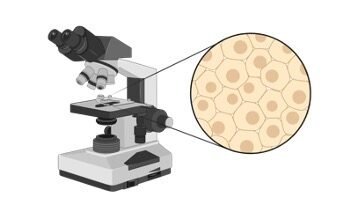Table of Contents
Barr Body Definition
Barr Body is also referred to as sex chromatin and represents the inactivated X chromosome present in the somatic cells of females. Females have 2 X chromosomes in their sex chromosome constitution, while males have one Y and X chromosome each.
What is Barr Body?
In the somatic cells of females, one X-chromosome is inactivated randomly by the lyonization process resulting in the formation of a Barr body. This occurs for dosage compensation as females have 2 X chromosomes which would otherwise produce double the amount of gene products compared with males.
In all organisms where the sex determination is by XY chromosomal method, this process of X-chromosome inactivation can be observed. This process helps in balancing the X chromosome expression in males and females.

The Barr body occurs as a result of heterochromatinization, while the active X chromosome is observed in a euchromatin state. The inactivated DNA is condensed and packed to repress the genes such that their transcription is hindered. While in the active X chromosome it is not packaged to freely allow molecules involved in transcription to interact with it.
Which X Chromosome becomes the Barr Body?
The selection of the X chromosome that has to be inactivated is done by a random process in the embryonic stage of any particular cell and it stays in this state for the rest of its life. The cells resulting from the division of these cells will all have the same X-chromosome inactivated. The number of Barr bodies is given as one less than the number of X-chromosomes present.
For instance in Turner’s syndrome, no inactivation of the X chromosome would occur even though the individual is female and in Klinefelter’s syndrome, one of the X chromosomes would be inactivated and would be present as a Barr body.
Mechanism of X-inactivation and Barr Body
Two genes Tsix (Xist reversed) and Xist (X-inactive specific transcript) are found in the X-inactivation center (XIC) that is located near the centromere on the X chromosomes. Xist is responsible for the inactivation of a gene and Tisx represses Xist. The chromosome that produces more expression of the Tsix gene will have less probability of being inactivated.
Initially, both X chromosomes in the female somatic cell express equal levels of Xist RNA, but once the process of inactivation starts the chromosome to be inactivated will express more Xist RNA that will then coat the whole chromosome and silence it. The presence of Tsix in other chromosomes represses the expression of the Xist gene that maintains it in the active form.
Not all the genes of the inactivated X chromosome are silenced. The Xist gene along with some other genes escapes heterochromatinization. So, a female that has Turner’s syndrome will still express fewer genes than a normal female.
Genetic Disorder of Barr Body
In the case of individuals with Turner’s syndrome that only has one X-chromosome, the individual may survive even though they don’t have a Barr body and express lesser genes. They won’t be able to develop like a normal average. Chromosomal abnormalities where there are more than 2 X chromosomes in an individual can lead to developmental dysfunctions.
In normal females, random inactivation can cause the maternal chromosomes to be silenced half the time, and the paternal one in the other half. But if one of them is repressed more than the other then depending on their ratio this may result in some problems.
Barr Body Citations
- Significance of the Barr body in human female tumors. Cancer Genet Cytogenet . 1981 Nov;4(3):269-74.
- The disappearing Barr body in breast and ovarian cancers. Nat Rev Cancer . 2007 Aug;7(8):628-33.
- Deciphering the Role of the Barr Body in Malignancy: An insight into head and neck cancer. Sultan Qaboos Univ Med J . 2017 Nov;17(4):e389-e397.
- Images are created with BioRender.com
Share












